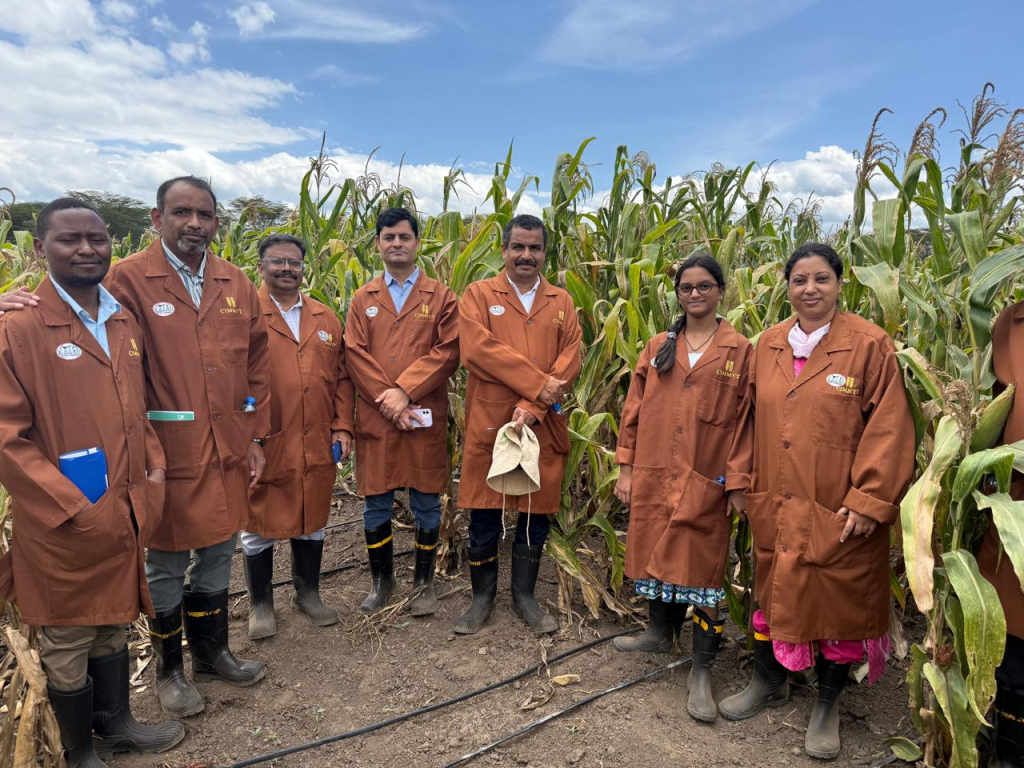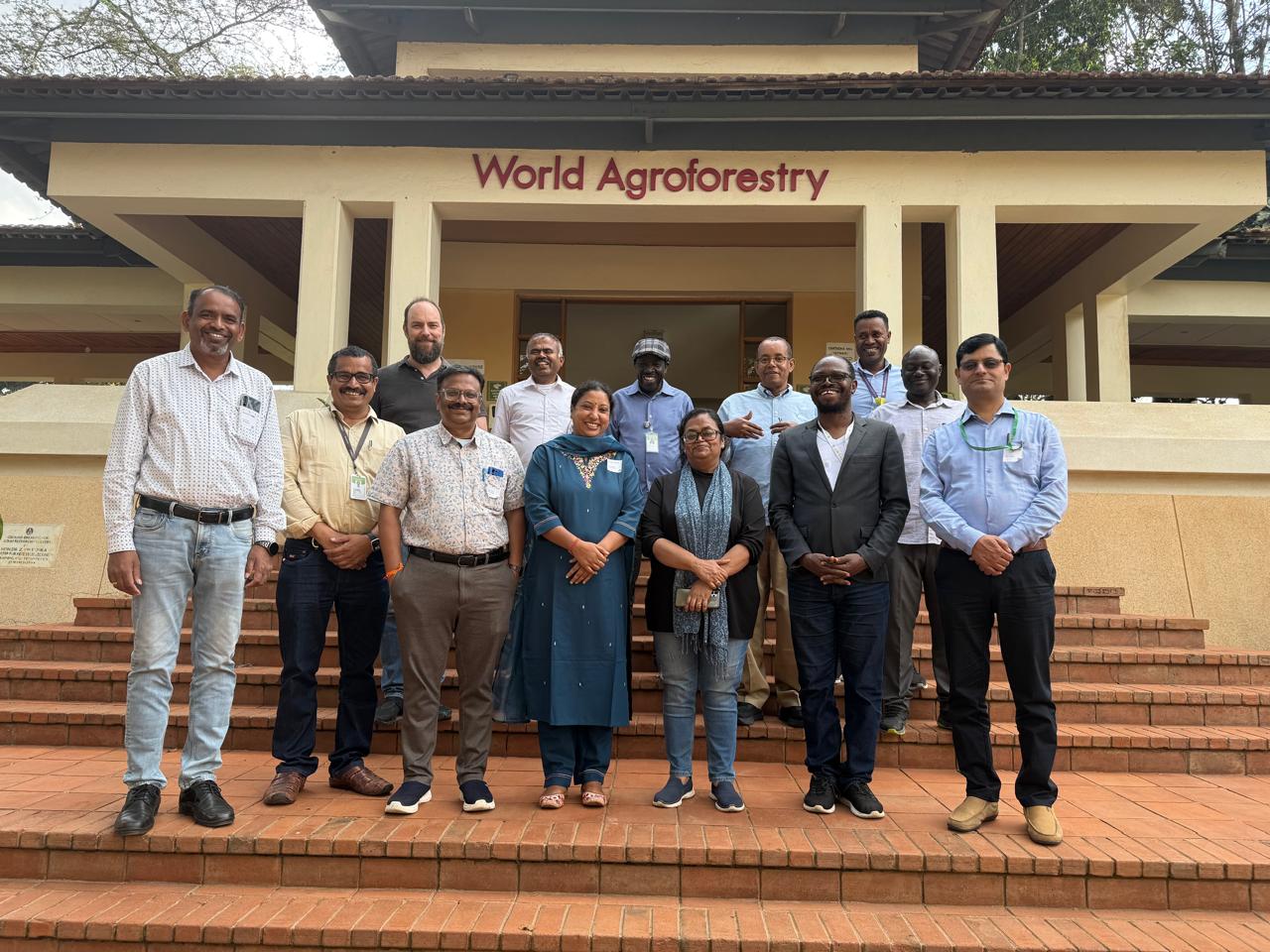Cross-Continental Learning: Indian Maize Scientists Visit CIMMYT-Kenya Under ICAR-CIMMYT Collaboration
By L.M. Suresh, CIMMYT, Nairobi, Kenya, and P.H. Zaidi, CIMMYT, Hyderabad, India

In September 2025, a team of four scientists from the Indian Maize Program embarked on a transformative journey to the Global Maize Program (GMP) at CIMMYT in Kenya, organized under the ICAR-CIMMYT collaborative program on maize.
The delegation included Sunil Neelam and Bhupender Kumar from ICAR-Indian Institute of Maize Research (ICAR-IIMR), Ludhiana, Jayasudha S. from Banaras Hindu University (BHU), Varanasi, and Sunil R. Karad from Mahatma Phule Krishi Vishwavidyalaya (MPKV), Maize Station at Kolhapur.
The week-long visit, held from 22-28 September, formed part of an advanced training-cum-exposure program aimed at strengthening collaborative research betweenICAR and CIMMYT. The visit took place across several key GMP research stations in Kenya, each showcasing cutting-edge technologies and practices in maize breeding, precision phenotyping, and pest and disease management. From the bustling laboratories in Nairobi to the remote fields of Naivasha and Kiboko, the team witnessed firsthand how science and innovation are shaping the future of maize improvement.
An Enriching Experience:
The visit began with an engaging interaction at CIMMYT’s GMP team in Nairobi. Scientists from multiple disciplines—breeding, pathology, entomology, and molecular biology—shared updates on their latest work and discussed Emerging trends in maize research. Key areas included doubled-haploid (DH) breeding, genome editing, and precision phenotyping.
At the maize lethal necrosis (MLN) screening facility in Naivasha, the team explored how CIMMYT researchers are tackling one of the most devastating maize diseases. Through controlled inoculation and advanced diagnostics, researchers are identifying resistant varieties and using gene-editing tools to develop future-proof maize lines.
The delegation also visited Seed Co, Kenya’s largest private seed company, revealed how partnerships with CIMMYT have led to the development of MLN-tolerant hybrids. The company’s focus on smallholder-friendly packaging and high-yielding varieties was particularly inspiring. At Katumani Research Station, the team learned about the rearing and management of Fall Armyworm (FAW) and stem borers—major pests threatening maize crop in lowland tropics. They also visited the mycotoxin management facility, where “Aflasafe,” a biological product for aflatoxin control, is being produced. This innovation holds promise for India, where aflatoxin contamination in maize-based products is a growing concern.
The final leg of the journey took the team to CIMMYT’s Kiboko Research Station, home to the Doubled Haploid (DH) Facility is revolutionizing maize breeding. By producing 100% homozygous lines within just a year, this technology accelerates genetic gains and improves crop resilience. Demonstrations of FAW-tolerant hybrids and field-based managed-stress drought-phenotyping trials offered practical insights into breeding for climate-resilient agriculture.

Why This Matters for the Indian Maize Program:
India’s maize sector is rapidly evolving—from a food and feed crop to a vital raw material for industry and biofuel production. With growing demand driven by poultry feed, starch industries, and ethanol production, the need for resilient, high-yielding maize varieties is more urgent than ever to harvest significantly more from the rainfed Kharif season. The learning and experience at GMP, Kenya, underscored the importance of establishing similar facilities in India to accelerate product development for rainfed ecologies, including DH breeding, managed-stress precision phenotyping, gene editing, FAW management, and aflatoxin control. Identifying hotspot regions for targeted research and adopting proven technologies, such as Aflasafe, could significantly reduce post-harvest losses and contribute to increased maize productivity and safety in India.
This visit was more than a training, which highlighted the power of international collaboration, the promise of advanced technologies, and the critical role of maize in ensuring food, feed, fodder, and energy security. As Dr. Bhupender Kumar reflects, the exposure to Kenya’s maize research ecosystem was “an immense opportunity to learn about new frontiers and priority areas of maize R&D”—a journey that will help fine-tune maize innovations in India. The delegation appreciated the initiative by CIMMYT-Hyderabad, India, for organizing and supporting the visit, and Dr. H.S. Jat, Director of ICAR-IIMR, India, for nominating and facilitating the team’s deputation to CIMMYT, Kenya.

